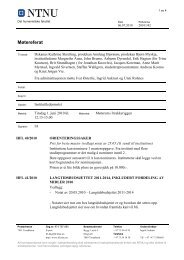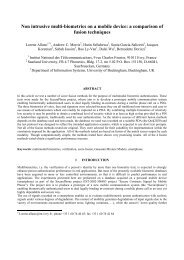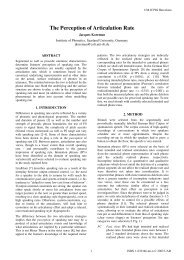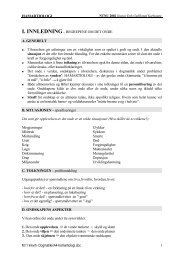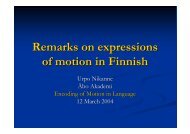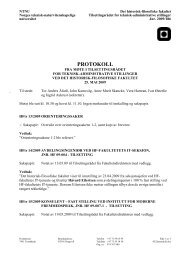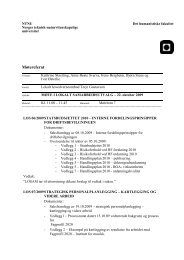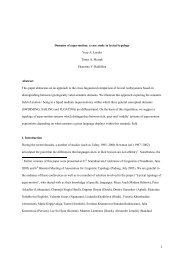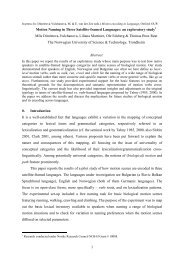Norwegian on the Web - Short grammar - NTNU
Norwegian on the Web - Short grammar - NTNU
Norwegian on the Web - Short grammar - NTNU
Create successful ePaper yourself
Turn your PDF publications into a flip-book with our unique Google optimized e-Paper software.
<str<strong>on</strong>g>Norwegian</str<strong>on</strong>g> <strong>on</strong> <strong>the</strong> <strong>Web</strong>, <strong>NTNU</strong> <strong>Short</strong> <strong>grammar</strong> 31<br />
Sentences <br />
There are two kinds of sentences in <str<strong>on</strong>g>Norwegian</str<strong>on</strong>g>, main clauses and subordinate<br />
clauses. These two clause types have different properties. Main clauses have a<br />
loose word order as any part of speech can be placed in fr<strong>on</strong>t of <strong>the</strong> sentence.<br />
However, <strong>the</strong> finite verb (V) must occur as <strong>the</strong> sec<strong>on</strong>d part (2). This rule is labelled<br />
<strong>the</strong> “V2 rule”. The sentence adverbials are in general placed after <strong>the</strong> verb.<br />
Subordinate clauses, however, have a fixed word order as <strong>the</strong> part of speech cannot<br />
move around.<br />
Word order V2 Placement of sentence<br />
adverbial<br />
Main clause Loose Yes After <strong>the</strong> finite verb<br />
Subordinate<br />
clause<br />
Fixed No Before <strong>the</strong> finite verb<br />
Main clause<br />
The basic word order in main clauses is SVO: Subject + Verb + Object (below as<br />
subscript S V O )<br />
Jeg S lånte V boka O<br />
I S borrowed V <strong>the</strong> book O<br />
Adverbials of time, place, manner are normally placed in <strong>the</strong> end:<br />
Jeg S lånte V boka O i går A<br />
I S borrowed V <strong>the</strong> book O yesterday A<br />
However, <strong>the</strong> adverbials in <strong>the</strong> end of <strong>the</strong> sentence can be moved to <strong>the</strong> fr<strong>on</strong>t of <strong>the</strong><br />
sentence as in English:<br />
Yesterday A I S borrowed V <strong>the</strong> book O<br />
In cases like <strong>the</strong>se <strong>the</strong> V2-rule is active. This rule says that in a <str<strong>on</strong>g>Norwegian</str<strong>on</strong>g> main<br />
clause <strong>the</strong> verb always is occupying <strong>the</strong> sec<strong>on</strong>d place as in<br />
I går A lånte V jeg S boka O<br />
Yesterday A I S borrowed V <strong>the</strong> book O<br />
In principle any sentence element may be moved to <strong>the</strong> fr<strong>on</strong>t of <strong>the</strong> sentence (loose<br />
word order) as l<strong>on</strong>g as <strong>the</strong> verb is occupying <strong>the</strong> sec<strong>on</strong>d place (V2 rule).<br />
There are two verb forms: Finite, which indicates tempus (imperative, present tense,<br />
past tense) and infinite, which do not indicate tempus (infinitive, past participle,<br />
gerund). It is <strong>the</strong> finite verb that is occupying <strong>the</strong> sec<strong>on</strong>d place of <strong>the</strong> sentence.



